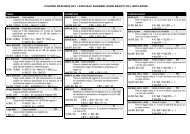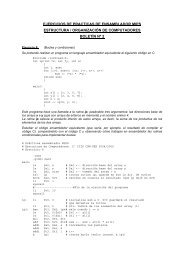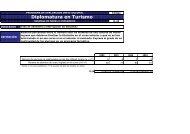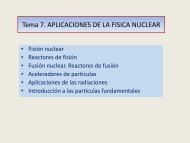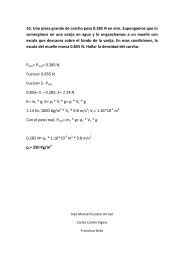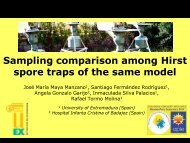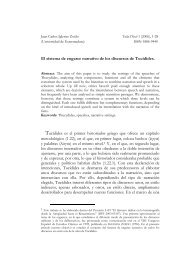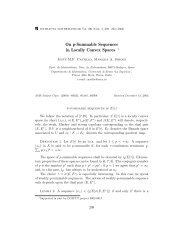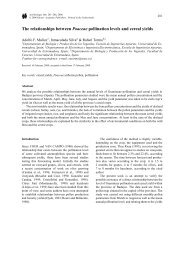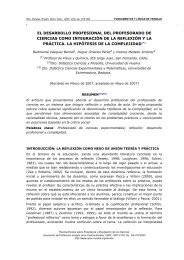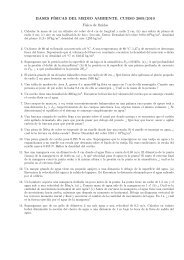Graph Topologies and Uniform Convergence in Quasi-Uniform ...
Graph Topologies and Uniform Convergence in Quasi-Uniform ...
Graph Topologies and Uniform Convergence in Quasi-Uniform ...
You also want an ePaper? Increase the reach of your titles
YUMPU automatically turns print PDFs into web optimized ePapers that Google loves.
134 j. rodríguez-lópez, s. romagueraSimilarly, the lower Hausdorff quasi-uniformity H − on C(X, Y ) hasU −1 ×Vbasic entourages of the form (U −1 × V ) − H= {(f, g) ∈ C(X, Y ) × C(X, Y ) :(U −1 × V )(x, f(x)) ∩ Gr g ≠ ∅ for all x ∈ X}, where U ∈ U <strong>and</strong> V ∈ V.The Hausdorff quasi-uniformity H U −1 ×V <strong>in</strong>duced on C(X, Y ) by the productquasi-uniformity U −1 × V is the supremum of H + U −1 ×V <strong>and</strong> H− U −1 ×V .Def<strong>in</strong>ition 2. Let (X, U) <strong>and</strong> (Y, V) be two quasi-uniform spaces. Thetopology generated on C(X, Y ) by the sets of the form G − = {f ∈ C(X, Y ) :Gr f ∩ G ≠ ∅} where G is a T (U −1 × V)-open set is called the lower proximaltopology <strong>and</strong> is denoted by T − (δ U −1 ×V).The topology generated on C(X, Y ) by all sets of the form G ++ = {f ∈C(X, Y ) : there exists U ∈ U <strong>and</strong> V ∈ V such that (U −1 × V )(Gr f) ⊆ G}where G is a T (U −1 × V)-open set is called the upper proximal topology <strong>and</strong>is denoted by T + (δ U −1 ×V).The topology T (δ U −1 ×V) = T + (δ U −1 ×V) ∨ T − (δ U −1 ×V) is called the proximaltopology.Let us recall that the proximal topology was essentially <strong>in</strong>troduced <strong>in</strong> [13],although the term “proximal (hit-<strong>and</strong>-miss) topology” was firstly used <strong>in</strong> [4],[6] <strong>and</strong> [12], where the relationship between the proximal topology <strong>and</strong> otherknown hyperspace topologies was studied. In particular, the proximal topologyis compatible with Fisher convergence [7] of sequences of sets, as considered<strong>in</strong> [1].3. The resultsProposition 1. Let (X, U) <strong>and</strong> (Y, V) be two quasi-uniform spaces. ThenT (δ U −1 ×V) = T (H + ) on C(X, Y ).U −1 ×VProof. Let us consider the set G ++ where G is a T (U −1 × V)-open set<strong>and</strong> A ∈ G ++ . Therefore, we can f<strong>in</strong>d U ∈ U <strong>and</strong> V ∈ V such that (U −1 ×V )(A) ⊆ G. Let us consider the set (U −1 × V ) + H(A). It is evident thatA ∈ (U −1 × V ) + H (A) ⊆ G++ .Furthermore, if we have that Gr f ∈ G − where G is a T (U −1 × V)-openset <strong>and</strong> f ∈ C(X, Y ), let (x, f(x)) ∈ Gr f ∩ G. S<strong>in</strong>ce (x, f(x)) ∈ G we canf<strong>in</strong>d U ∈ U <strong>and</strong> V ∈ V verify<strong>in</strong>g (U −1 × V )((x, f(x))) ⊆ G. Let W ∈ V suchthat W 2 ⊆ V . S<strong>in</strong>ce f ∈ C(X, Y ) we can f<strong>in</strong>d U ′ ∈ U such that (f(x), f(y)) ∈W whenever (x, y) ∈ U ′ . We claim that (U ′−1 × W ) + H (Gr f) ⊆ G− . LetGr g ∈ (U ′−1 × W ) + H(Gr f). Therefore, we can f<strong>in</strong>d (y, f(y)) ∈ Gr f such that




